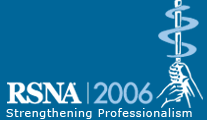
Abstract Archives of the RSNA, 2006
LL-CA4642
The ABCs of VSDs: Understanding Ventricular Septal Defects
Education Exhibits
Presented in 2006
Kristopher Wayne Cummings MD, Abstract Co-Author: Nothing to Disclose
Sanjeev Bhalla MD, Presenter: Nothing to Disclose
Christine Onsy Menias MD, Abstract Co-Author: Nothing to Disclose
Cylen Javidan-Nejad MD, Abstract Co-Author: Nothing to Disclose
Pamela Karen Woodard MD, Abstract Co-Author: Researcher, Siemens AG
Speakers Bureau, General Electric Company
Advisory Board, Tyco Healthcare (Mallinckrodt Inc)
Consultant, Schering AG (Berlex Inc)
Fernando R. Gutierrez MD, Abstract Co-Author: Nothing to Disclose
1. To review CT and MR features of ventricular septal defects (VSDs)
2. To highlight the classification of VSDs based on location in the septum
3. To review associated conditions with different types of VSDs
4. To demonstrate unusual complications of VSDs, including double chamber right ventricle and aortic insufficiency from the Venturi efffect
This exhibit will center on illustrating CT and MR techniques for the evaluation of VSDs and on classifying VSDs based on location (perimembranous, inlet, muscular and supracrystal). The associations with the various types of VSDs will be highlighted (endocardial cushion defect, isolated, conotruncal abnormalities), as well as some of the complications, including double chamber right ventricle, windsock or aneurysm and Venturi effect resulting in aortic insufficiency.
Knowledge of the variety of VSDs, their anatomic locations and their associations are important for radiologists to understand in order for the actual detection of the VSD and any important, associated finding(s).
Cummings, K,
Bhalla, S,
Menias, C,
Javidan-Nejad, C,
Woodard, P,
Gutierrez, F,
The ABCs of VSDs: Understanding Ventricular Septal Defects. Radiological Society of North America 2006 Scientific Assembly and Annual Meeting, November 26 - December 1, 2006 ,Chicago IL.
http://archive.rsna.org/2006/4435853.html

